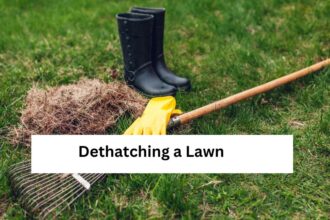Lawns are not just patches of green; they are outdoor sanctuaries, adding beauty to our surroundings and providing space for relaxation and recreation. However, maintaining a lush and healthy lawn requires more than just occasional mowing. In fact, there are several common mistakes that many homeowners make, which can inadvertently harm their lawns rather than nurture them. Here are 19 things you should never do to your lawn if you want it to thrive:
1. Over-fertilizing:
Over-fertilizing might seem like a good idea to promote lush growth, but it can actually burn your lawn and cause long-term damage to the soil.
2. Ignoring pH Levels:
Each type of grass has its preferred pH level, and ignoring this can result in poor nutrient uptake and stunted growth. Regularly test and adjust the pH of your soil accordingly.
3. Mowing Too Short:
While it might save you time in the short term, mowing your lawn too short weakens the grass and makes it more susceptible to pests, diseases, and drought.
4. Watering Incorrectly:
Watering too much or too little can stress your lawn. Aim for deep, infrequent watering to encourage deep root growth and drought resistance.
5. Neglecting Weed Control:
Weeds not only compete with your grass for nutrients and water but also detract from the overall appearance of your lawn. Implement a regular weed control regimen to keep them at bay.
6. Not Aerating the Soil:
Compacted soil restricts root growth and prevents water and nutrients from reaching the grassroots. Aerating your lawn allows for better air and water circulation, promoting healthier turf.
7. Using Chemical Pesticides:
Chemical pesticides may rid your lawn of pests, but they also harm beneficial insects and soil microbes. Explore organic alternatives to maintain a balanced ecosystem in your yard.
8. Ignoring Drainage Issues:
Poor drainage can lead to waterlogged soil, which suffocates the roots and encourages fungal diseases. Address any drainage problems promptly to prevent waterlogging.
9. Skipping Regular Maintenance:
Consistent care is key to a healthy lawn. Skipping tasks like fertilizing, mowing, and watering on a regular schedule can result in a lackluster lawn.
10. Not Seeding Bald Spots:
Bald spots are an invitation for weeds to take over. Fill them in with grass seed and keep them moist until new growth appears to prevent weed infestation.
11. Using Dull Mower Blades:
Dull mower blades tear the grass rather than cleanly cutting it, leaving it susceptible to disease and stress. Sharpen your mower blades regularly for a clean cut.
12. Over-watering:
Excessive watering not only wastes water but also promotes shallow root growth, making your lawn more vulnerable to drought stress and diseases like fungus.
13. Parking Heavy Objects:
Parking cars or heavy equipment on your lawn compacts the soil and damages the grass, leading to bare patches and soil erosion.
14. Letting Pet Waste Accumulate:
Pet waste not only discolors your grass but also introduces harmful bacteria and parasites. Regularly clean up after your pets to keep your lawn healthy.
15. Ignoring Signs of Disease:
Brown patches, thinning grass, and unusual growths are all signs of potential lawn diseases. Act promptly to diagnose and treat any issues to prevent further spread.
16. Neglecting to Mulch:
Mulching grass clippings returns valuable nutrients to the soil, promotes moisture retention, and suppresses weed growth. Make mulching a regular part of your lawn care routine.
17. Leaving Leaves Unattended:
Leaving fallen leaves on your lawn can smother the grass and create an ideal environment for pests and diseases. Remove leaves promptly to prevent damage.
18. Not Adjusting to Seasonal Changes:
Your lawn’s needs change with the seasons. Adjust your care routine accordingly, whether it’s watering more in summer or aerating in the fall.
Conclusion:
Taking care of your lawn is a year-round commitment that requires attention to detail and consistency. By avoiding these common mistakes and implementing proper lawn care practices, you can ensure a lush, green lawn that enhances the beauty of your outdoor space for years to come.
FAQs:
1. How often should I water my lawn?
- The frequency of watering depends on factors like soil type, weather conditions, and grass type. As a general rule, aim for deep, infrequent watering rather than frequent shallow watering.
2. Is it necessary to aerate my lawn every year?
- While annual aeration can benefit most lawns, the frequency may vary depending on soil compaction and other factors. Consider aerating your lawn when the soil becomes compacted or every 1-3 years.
3. Can I use homemade remedies for weed control?
- Yes, there are several homemade weed control remedies you can try, such as vinegar solutions or boiling water. However, effectiveness may vary, and it’s essential to use caution to avoid harming your grass.
4. How can I tell if my lawn is suffering from a nutrient deficiency?
- Yellowing or stunted growth, along with poor overall health, can indicate a nutrient deficiency in your lawn. Conducting a soil test can help identify specific nutrient deficiencies and guide your fertilization efforts.
5. What should I do if I suspect my lawn has a disease?
- If you notice signs of disease in your lawn, such as brown patches or unusual growths, it’s essential to act promptly. Consult with a lawn care professional or your local extension office for proper diagnosis and treatment recommendations.





